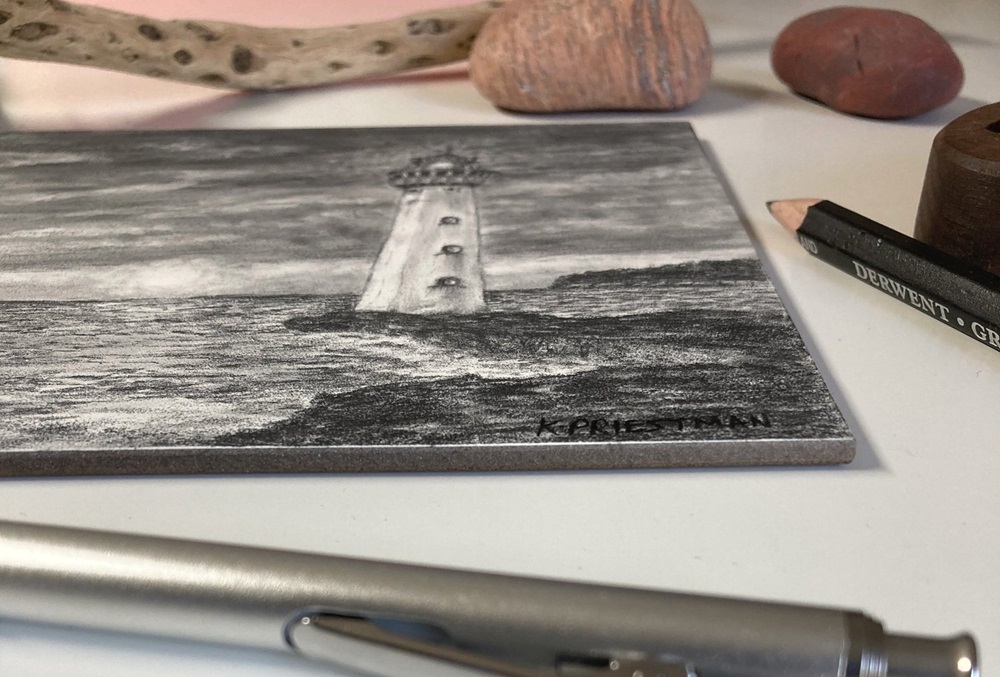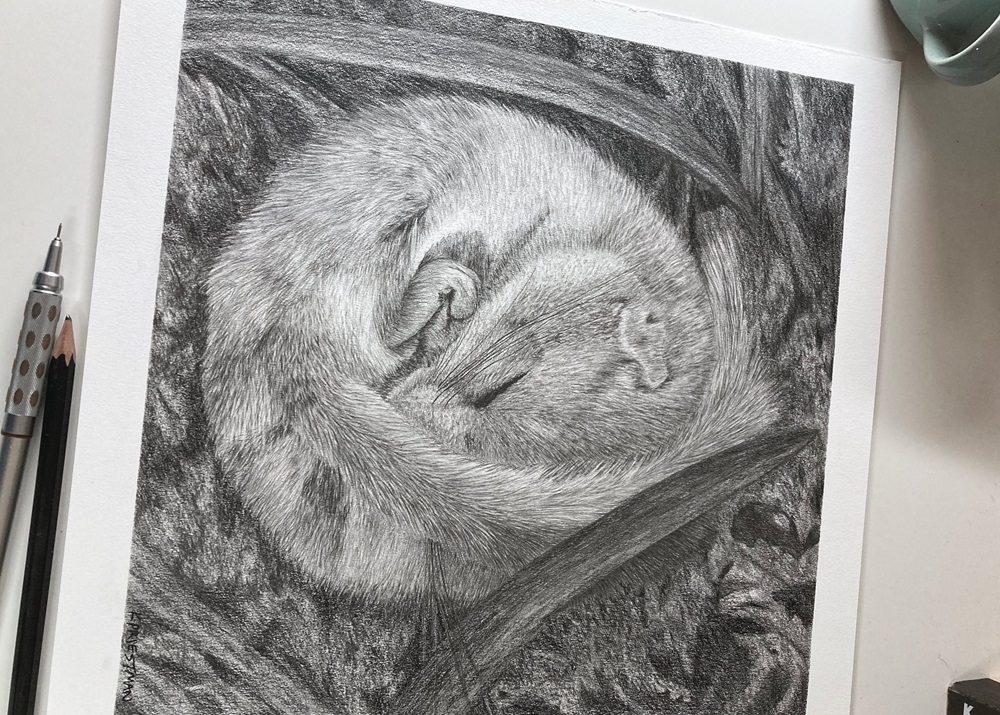In the fields of design and art, accuracy and precision are crucial. Whether you’re a professional technical draughtsman, a hobbyist artist, or someone with experience in art, being able to move a design from one surface to another flawlessly is transformational. Let me introduce you to graphite paper, an apparently straightforward yet handy instrument that has been a quiet collaborator for many artists. Graphite paper, sometimes called carbon transfer paper, is a thin sheet with a layer of graphite infused. This makes it easy to copy complex designs, patterns, and sketches. This small instrument can make a big difference in the productivity and calibre of your work, saving you time and effort while making sure that every little detail is preserved.
There is an exploration of the diverse applications of graphite paper in numerous sectors. There is a detailed guide on how to get the most out of this priceless tool. Graphite paper is the unsung hero that can improve your creative process, whether you’re using it to trace a delicate pattern onto fabric, transfer a complicated blueprint into drafting paper, or ensure your artistic vision is correctly realised on canvas.
Graphite paper is a specialist instrument that transfers drawings or designs from one surface to another. It is sometimes referred to as carbon paper or transfer paper. It comprises a thin sheet of paper with a layer of carbon, graphite, or a related material applied to one side. Artists frequently use graphite paper in art and design to trace a picture or pattern onto a new surface. This works exceptionally well for copying rough sketches onto finished canvases or surfaces. It guarantees accuracy and consistency by assisting in creating precise outlines for intricate patterns.
Craftspeople use graphite paper to transfer designs onto leather, fabric, and wood. Graphite paper is used in needlework to assist in transferring complex patterns onto fabric and serve as a sewing guide. Graphite paper is used by engineers and architects to transfer technical drawings and plans onto various surfaces for future development or reference. Communicating only the relevant portions makes making changes and corrections to existing designs simple.
Tips for Using Graphite Paper
When tracing, apply consistent pressure to guarantee a clean transfer. Overpressurization may result in smearing. Until the graphite layer is exhausted, graphite paper can be reused several times. To prevent smearing the graphite on the surface, wash your hands thoroughly. Always do a test transfer on scrap material to verify the desired result and adjust the pressure appropriately.
Ensure your original design is correctly aligned with the surface underneath as you carefully place it on top of the graphite paper. To secure it in place, use tape. When tracing your design, apply constant moderate pressure. Smudging can occur by applying too much pressure, while an incomplete transfer can occur by applying too little. To determine the proper pressure required for a simple transfer, conduct a small test transfer on a scrap piece of material.

For tracing, use a pencil, ballpoint pen, or stylus. Use a pen or stylus with a fine tip for tiny details to get exact lines. Try various techniques to determine the most effective for your project and surface. Lift a corner of the graphite paper and design now and then to see how the transfer is going. This allows you to make any necessary changes before finishing the complete design.
Keep your hands dry and clean to avoid graphite smudges on your design or the surface. To prevent oils from your skin from getting on the paper as you trace, think about putting a piece of clean paper under your palm. Graphite paper is reusable for several uses. Store it flat or rolled to avoid wrinkles and guarantee even future transfers. Move and rotate the graphite paper for larger designs to utilise all the space before throwing it away. If necessary, go over the transferred lines with a pencil or pen to make them darker. Use a soft rubber to remove any undesired graphite marks from your surface gently. Before adding more details, consider applying a fixative spray to protect the transferred pattern if you’re working on a medium that smudges easily, like fabric or canvas.
Graphite Transfer Paper
Artists and designers use graphite transfer paper to transfer images or designs to different surfaces. Graphite, a substance akin to pencil leads, is applied on one side of the paper in a coating. On the surface, if you wish to transfer your design, place the graphite side down. Lay your original artwork or picture over the transfer paper. Trace along the design’s lines with a pencil or other sharp object. The graphite moves to the lower surface due to the pressure. After removing the transfer paper and the original design, a duplicate remains on the surface.
Artists utilise graphite transfer paper to precisely transfer sketches or reference images onto drawing paper, canvas, or other surfaces. It is helpful for various craft undertakings where exact patterns must be assigned. Useful for painting furniture, walls, and other items with complex designs. Tattoo artists use similar transfer techniques to outline designs on the skin prior to inking.
Use tape to keep your design and the transfer paper in place to prevent slippage during tracing. Make sure the graphite traces can be readily removed or painted over by testing the transfer procedure on a small piece of the surface you plan to use. If needed, soften the transferred lines using a kneaded rubber without causing any damage to your surface.
White Graphite Paper
White graphite paper functions similarly to regular graphite transfer paper but is intended for dark surfaces. It is also sometimes called white carbon paper or white transfer paper. Perfect for some craft and artistic applications, the white transfer medium highlights the pattern against a dark background. A white transfer substance is applied on one side of the paper. Place the white-coated side on The dark surface where you wish to transfer your design. Put your artwork or picture on top of the white graphite sheet. Trace along the design’s lines with a pencil or other sharp object. The white material transfers to the surface below due to pressure.
Graphite Paper for tracing
A vital tool for designers, painters, and craftspeople is graphite paper for tracing. It allows for the easy and precise transfer of complex designs onto various surfaces. To keep the graphite paper and your design from moving while you trace, bind their edges using tape. This is particularly useful for more elaborate designs. Trace over your design’s lines with a pencil or stylus. Use steady, mild pressure to move the graphite to the below surface.
Graphite paper is a vital tool for designers, painters, and craftspeople because it provides a dependable way to quickly and precisely transfer complex designs. Because of its adaptability, it may be used on various materials, including paper, canvas, wood, and fabric. This makes it an indispensable tool in many artistic professions. Graphite paper guarantees precise and effective reproduction of your patterns, whether you’re working on intricate artwork, ornamental crafts, or even tattoo stencil preparation.
Users can use best practices and straightforward instructions to accomplish professional-quality results without complicated equipment. Accurate design transfer reduces time spent and improves the quality of the finished product, enabling more time to concentrate on the creative process and detail-oriented work.





